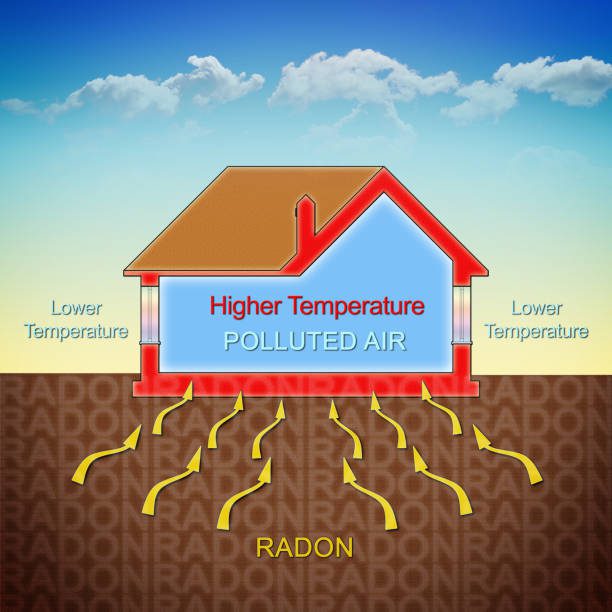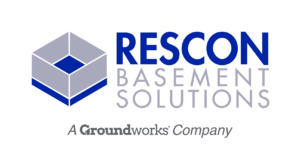Radon Mitigation Systems: The Ghostbuster for Your Basement’s Hidden Danger
Oct 28, 2024
Basements can be haunted by many dangerous terrors, such as mold, standing water, and radon. Radon is a natural, dangerous, and invisible radioactive gas that is the result of decaying rocks and soil. If your basement has a radon infestation, have no fear – the radonbusters are here! By installing a radon mitigation system, you can have a safe, radon-free basement.
In this blog, we’ll explain what radon is, how it can impact your health, and how radon mitigation systems can save your basement from this invisible terror.
Radon’s Ghostly Presence
Before we can talk about what we’re avoiding, we need to understand Radon fully. Check out our deep dive on Radon’s appearance, source, and why basements are so prone to it in our recent blog.
Radon’s Appearance & Source: Radon is a naturally occurring radioactive gas that forms when uranium – found in soil, rock, and water – breaks down over time. This decay process releases radon, which then seeps through the ground and into the air. Radon is a very sneaky intruder because it’s a colorless, odorless, and tasteless gas, making it impossible to detect with the human senses.
How Radon Accumulates: Radon builds up in basements naturally for a few reasons. These include basements’ proximity to the source, poor ventilation, and air pressure differences. While you can’t control the fact that a basement is underground or how air pressure science works, you can control ventilation. From opening windows regularly to installing a radon mitigation system, there are a few ways to improve basement ventilation to avoid a radon infestation.
Health Effects from Radon: Long-term exposure to elevated radon levels can lead to serious health problems, lung cancer the most severe. In fact, radon is the second leading cause of lung cancer after smoking. Because it builds up over time in enclosed spaces like basements, extended exposure increases the risk of developing health issues, even for non-smokers.
A Proton Pack for Your Basement
A radon mitigation system is a crucial to reducing radon gas levels in buildings. By implementing a radon mitigation system, you can lessen the risks associated with prolonged exposure to this harmful gas. It’s an essential investment for maintaining a safe indoor environment for you and your family.
How It Works: These systems work by creating a pressure difference between the soil underneath the structure and the inside air, preventing radon from seeping into living spaces. Typically, a pipe is installed through which radon gas is vented out of the building. A fan attached to the pipe helps draw out the radon gas and expel it safely into the outdoor environment.
Types of Systems: Radon mitigation systems come in various types to suit different needs and structures. We recommend consulting a professional to help select the best one for your home, as you want to ensure the system is built to efficiently mitigate radon and not cause more issues for your home.
Sub-Slab Depressurization Systems (SSDs): This system is installed beneath the foundation and relies on a fan to draw out radon gas before it can enter the home. A sump pump is placed under the foundation where the radon gas can pool. Leading out of that is a PVC pipe that goes up and out of the home, which has a fan near the top that creates a pressure difference to pull the radon out.
Passive Radon Reduction Systems: These systems look very similar to SSDs, but they do not suck the radon out of the home, instead only providing a path of least resistance for the radon to escape. It still has a sump under the foundation with a PVC pipe leading out. There is no fan, but instead relies on the radon slowly coming out with natural pressure differences.
Tile Depressurization Systems: Sump pumps require a large well-like hole in the ground, which means it can become a major conduit for radon to seep into the basement. With a tile depressurization system, homeowners can install a radon mitigation system on top of the existing pit and vent the air out of the basement.
Don’t Let Radon Trick You—Invest in Your Safety
Several factors can influence the price of installing a radon mitigation system, such as the size of your home, the type of foundation, and the chosen mitigation method. On average, homeowners can expect to pay anywhere from $800 to $2,500 for a basic radon mitigation system installation. It’s important to remember that investing in a radon mitigation system is not just about upfront expenses; it’s an investment in your health and safety for years to come.
As Halloween approaches, it’s easy to get caught up in spooky fun, but don’t let the real dangers in your basement go unnoticed.
Radon may be an invisible specter, but it poses a serious threat to your health. Protect your home and your family by investing in a radon mitigation system. With the right setup, you can banish radon for good and ensure your basement is a safe, scare-free zone—because when it comes to radon, the only thing spooking your basement should be Halloween decorations!

